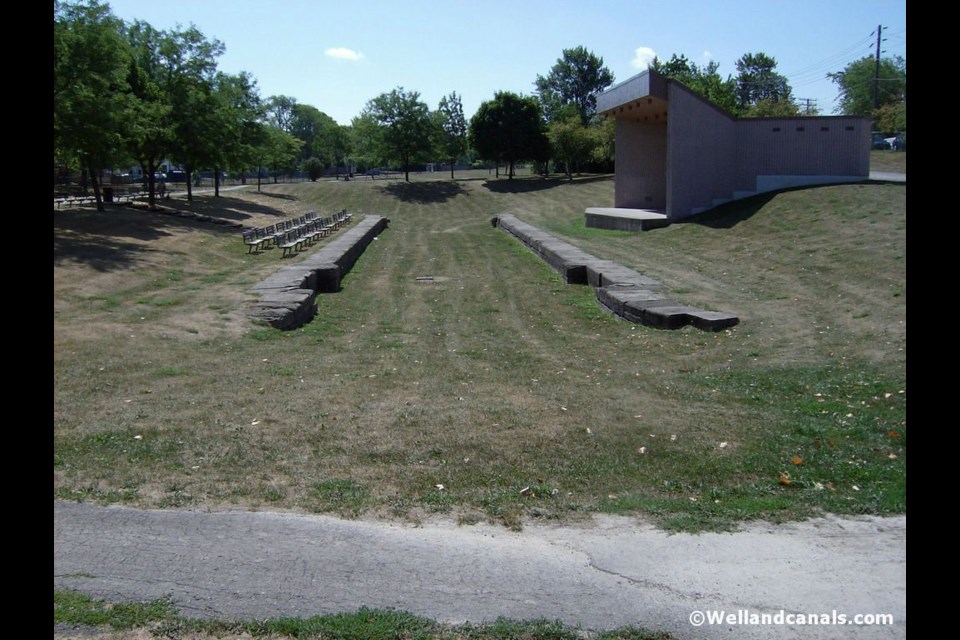As the locks and their gates were all made of wood, it has become common in these days of greater hydraulic achievements to refer to this modest beginning as the “wooden canal.” Some of the first locks were only 14 feet wide, but these were afterwards enlarged.
This new line of travel, which diverted commerce from the frontier, was by no means approved of by the inhabitants of Niagara-on-the-Lake, then the chief town in the district. For many years, it was the cause of great jealousy between this old port and the new city of St. Catharines.
The support of the government in the interests of the canal was obtained chiefly by the efforts of Rev. Dr. Strachan, then a member of the Legislative Council, and of Chief Justice McLean, at that time, Speaker of the House of Assembly.
Already, half a million pounds had been spent on the work, and much more money was needed for improvements, so in 1842, the government bought out all the shareholders and assumed entire control of the canal.
The channel was at once enlarged, and a new waterway was dug from Welland Junction to Port Colborne on Lake Erie. This formed the first direct connection between the two inland seas. The long level between Allanburg and Port Colborne was still fed from the Grand River, and therefore vessels had to be locked down into Lake Erie as well as into Lake Ontario.
In 1843, stone locks 150 feet long by 26 feet 6 inches wide replaced the old wooden ones. Lock number 1 at Port Dalhousie, Lock 2 at St. Catharines, and one at Allanburg were 200 feet long and 45 feet wide. At each of these, vessels could be lowered eight and a half feet to the next level, and thus the descent from the Grand River level was easily made. A waste-weir for each lock served as a regulator for the water.
The aqueduct at Welland was rebuilt of stone, its length being 316 feet and its width 45 feet, while a depth of 10 feet 8 inches allowed it to serve for either the Grand River of the Lake Erie level. The length from Port Colborne to Port Dalhousie was 27 and one-fifth miles, and this constituted the old Welland Canal.
In 1870, the government began the construction of what was called the new canal. From Port Dalhousie to Allanburg, a distance of 10 miles, an entirely new waterway was made, running east of St. Catharines and Thorold, its greatest distance from the old one at any point being a mile and a half. At Allanburg, it joined the old canal, and from that place to Port Colborne the channel was enlarged. The total length was then 26 and three-quarter miles.
The summit was reduced from the Grand River to the level of Lake Erie, and from Port Colborne to Allanburg, there was no descent. From the latter point to Lake Ontario, there is a fall of 326-3/4 feet, which is overcome by 25 stone locks 270 feet long by 45 feet wide. The canal is 100 feet wide at the bottom, and has a depth of 14 feet. The depth was at first 12 feet, but the banks were raised 2 feet. The aqueduct over the Welland River was considered one of the finest pieces of masonry on the continent.
At Thorold, the canal was crossed by the Niagara Central Railway Bridge, and a little south of the town, the Welland branch of the Grand Trunk Railway had another bridge over it. The Great Western branch passed under the canal; its tunnel 713 feet long, including the approaches, as it described a curve of nearly one and a half feet radius. The width was 16 feet, while the height of the centre of the arch from the ground was 18 feet. At a short distance north of this tunnel there was another culvert, through which a road passed. In 1884, the whole work was completed, the entire cost having been $13,000,000.
The locks and bridges were all lighted by gas.



